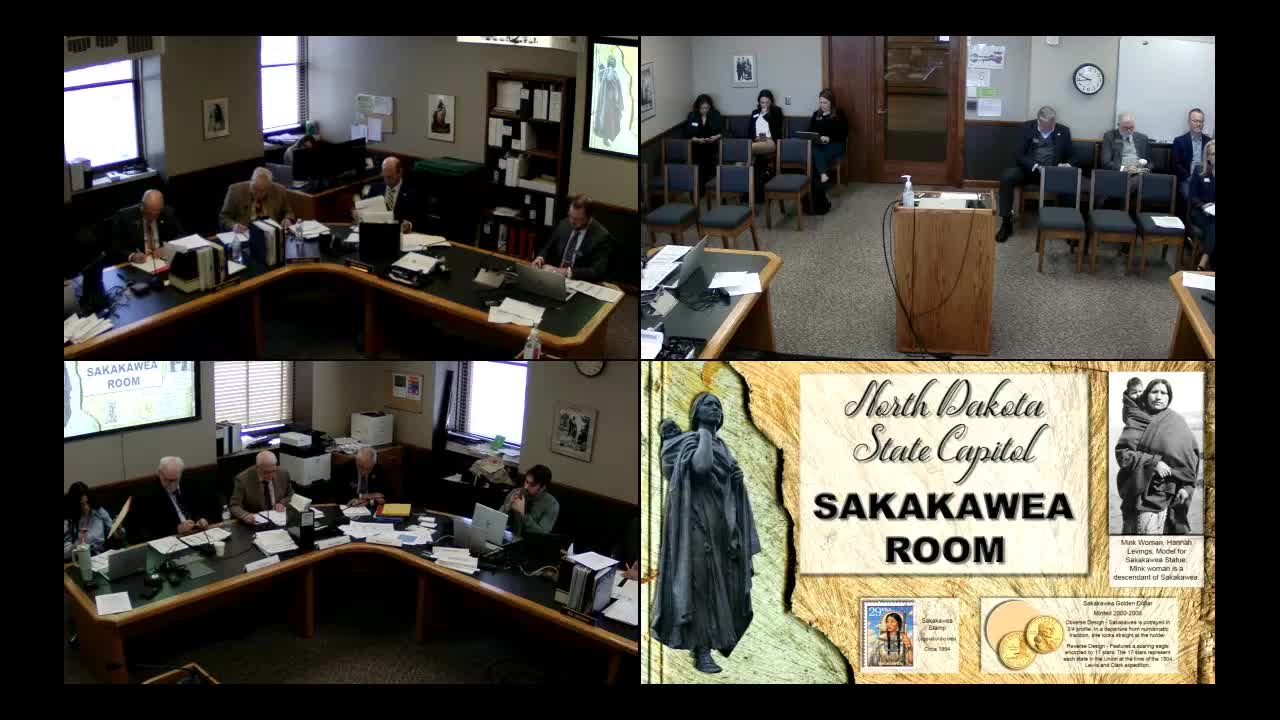Committee proposes $5M cuts to NDSU and UND funding amid budget review
May 01, 2025 | Senate, Legislative, North Dakota
This article was created by AI summarizing key points discussed. AI makes mistakes, so for full details and context, please refer to the video of the full meeting. Please report any errors so we can fix them. Report an error »

In the heart of North Dakota's legislative chambers, a pivotal discussion unfolded during the SB 2003 Conference Committee meeting on May 1, 2025. As lawmakers gathered, the air was thick with the weight of financial decisions that could shape the future of education and health services in the state.
One of the key topics was the proposed budget adjustments for various programs, including significant cuts to the North Dakota State University (NDSU) and the University of North Dakota (UND). A committee member suggested a potential reduction of $2 million from a specific line item, emphasizing the need for fiscal responsibility. The conversation quickly shifted to the challenge grants, with another member proposing a similar cut of $5 million, reflecting a broader strategy to streamline funding across educational institutions.
The discussion also touched on the UND Allied Health Facility, where the committee considered utilizing the Community Health Trust Fund to support its development. Initially, there was a proposal to allocate the entire amount from this fund, but further deliberation revealed the necessity to reassess other pressing needs. A suggestion emerged to allocate $3 million instead, highlighting the careful balancing act lawmakers must perform when addressing multiple funding priorities.
However, the dialogue was not without its complexities. Confusion arose regarding the availability of funds, with committee members expressing differing views on whether sufficient resources existed to support these initiatives. One member noted a conversation with leadership indicating that a particular fund was depleted, while another insisted that there were indeed adequate funds available, even after accounting for increases in the Department of Human Services budget. This discrepancy underscored the importance of clear communication and accurate financial assessments as the committee navigated these critical decisions.
As the meeting progressed, it became evident that the outcomes of these discussions would have lasting implications for North Dakota's educational and health sectors. The committee's deliberations not only reflected the immediate financial landscape but also set the stage for future investments in the state's infrastructure and services. With each proposed cut and allocation, the committee members were acutely aware of their responsibility to the citizens they serve, striving to make informed choices that would benefit the community as a whole.
One of the key topics was the proposed budget adjustments for various programs, including significant cuts to the North Dakota State University (NDSU) and the University of North Dakota (UND). A committee member suggested a potential reduction of $2 million from a specific line item, emphasizing the need for fiscal responsibility. The conversation quickly shifted to the challenge grants, with another member proposing a similar cut of $5 million, reflecting a broader strategy to streamline funding across educational institutions.
The discussion also touched on the UND Allied Health Facility, where the committee considered utilizing the Community Health Trust Fund to support its development. Initially, there was a proposal to allocate the entire amount from this fund, but further deliberation revealed the necessity to reassess other pressing needs. A suggestion emerged to allocate $3 million instead, highlighting the careful balancing act lawmakers must perform when addressing multiple funding priorities.
However, the dialogue was not without its complexities. Confusion arose regarding the availability of funds, with committee members expressing differing views on whether sufficient resources existed to support these initiatives. One member noted a conversation with leadership indicating that a particular fund was depleted, while another insisted that there were indeed adequate funds available, even after accounting for increases in the Department of Human Services budget. This discrepancy underscored the importance of clear communication and accurate financial assessments as the committee navigated these critical decisions.
As the meeting progressed, it became evident that the outcomes of these discussions would have lasting implications for North Dakota's educational and health sectors. The committee's deliberations not only reflected the immediate financial landscape but also set the stage for future investments in the state's infrastructure and services. With each proposed cut and allocation, the committee members were acutely aware of their responsibility to the citizens they serve, striving to make informed choices that would benefit the community as a whole.
View full meeting
This article is based on a recent meeting—watch the full video and explore the complete transcript for deeper insights into the discussion.
View full meeting
